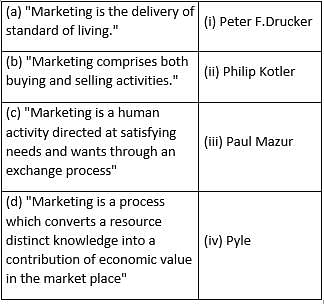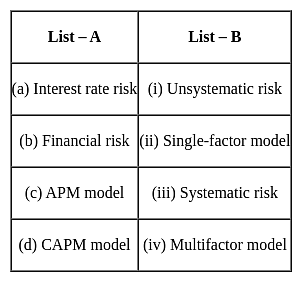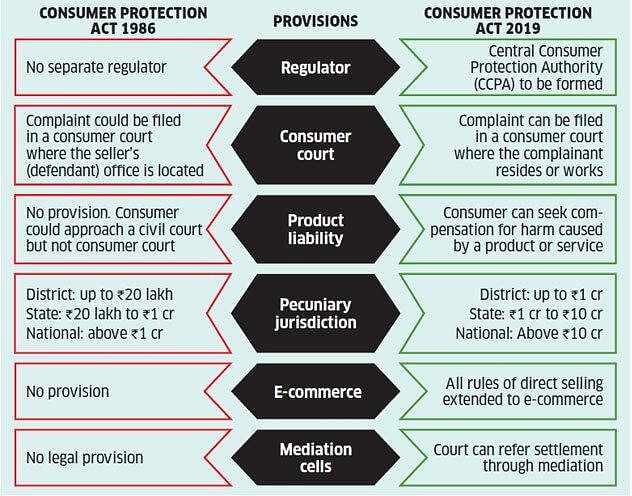APSET Paper 2 Mock Test - 10 (Commerce) - AP TET MCQ
30 Questions MCQ Test - APSET Paper 2 Mock Test - 10 (Commerce)
Given the production function Q = 10 L0.8 K0.2, the marginal product of labour (MPL) and capital (MPk) respectively are given by
A. MPL = 8(K/L)0.2
B. MPL = 8(L/K)0.2
C. MPK = 2(L/K)0.8
D. MPK = 2(K/L)0.2
Choose the correct answer
Which two of the following are the function of WTO
a) To facilitate the implementation, administration and operation of trade agreement
b) To carry out periodic reviews of the trade policies of its member countries
c) To assist in the establishment of a multilateral system of payments
d) To promote international monetary cooperation
Choose the correct option from the following:
| 1 Crore+ students have signed up on EduRev. Have you? Download the App |
Which of the following is a supply strategy?
Given below are two statements, one is labelled as Assertion A and the other is labelled as Reason R:
Assertion A : A stereotyped and male-centered vision discourages some women from participating in business activities that could have a consequence on people who interact with women at the community level.
Reason R : Attributions of the society and the different socialisation processes relating to men and women may create obstacles for women due to unequal distribution of assets and services.
In light of the above statements, choose the correct answer from the options given below
With reference to the foreign exchange market, consider the following statements :
(I) The foreign exchange market is a global decentralized market for the trading of currencies.
(II) This includes all aspects of buying, selling, and exchanging currencies at current or determined prices.
(III) The foreign exchange market works through financial institutions.
(IV) The foreign exchange market determines the relative values of different currencies.
Which of the following statements are correct?
Identify from the following the incorrect statement(s) regarding money market:
(a) The call money market deals in short-term finance repayable on demand, with a maturity period varying from one day to 14 days.
(b) Treasury bills are instruments of short-term borrowing by the Government of India, issued as promissory notes under discount.
(c) A reduction in the repo rate helps banks to get money at a cheaper rate.
(d) Money market mutual funds invest money in specifically, high-quality and very short maturity-based money market instruments.
Match the given lists and select the correct code for the answer:

Match the following statements with their authors.

Assertion (A): Both tax planning and tax
Reasoning (R): Tax planning follows the
Codes:
Which of the following principle states that the selection of a candidate for a position is based on the candidate's performance in their current role?
When marginal utility is negative, then total utility:
Branding decisions are based on__________.
The Consumer Protection Act, of 2019, provides for which of the following?
1. The Central Consumer Protection Authority (CCPA).
2. The Central Consumer Protection Council at the national, state, and district levels.
3. The Consumer Disputes Redressal Commission at the national level only.
4. The Consumer Mediation Cell is to be attached to each of the District Commissions and the State Commissions.
Select the correct answer using the code given below:
In most countries with income taxation, corporate entities are subject to tax on their profits and, in addition, are taxed in the hands of shareholders is known as ___________.
Assertion: 'Targeting' solely focuses on selecting the largest market segment.
Reason: A target market is chosen based on its attractiveness, size, growth potential, profitability, competitive positioning, and resonance with the organization's objectives.
Assertion: 'Positioning' involves creating a distinct market space that differentiates the product from competitors.
Reason: Positioning aligns the business’s offering with the needs of the targeted segments by developing a unique selling proposition.
Targeting' in the STP model essentially means
With reference to the applicability of Ind AS, which of the following is not correct?





















